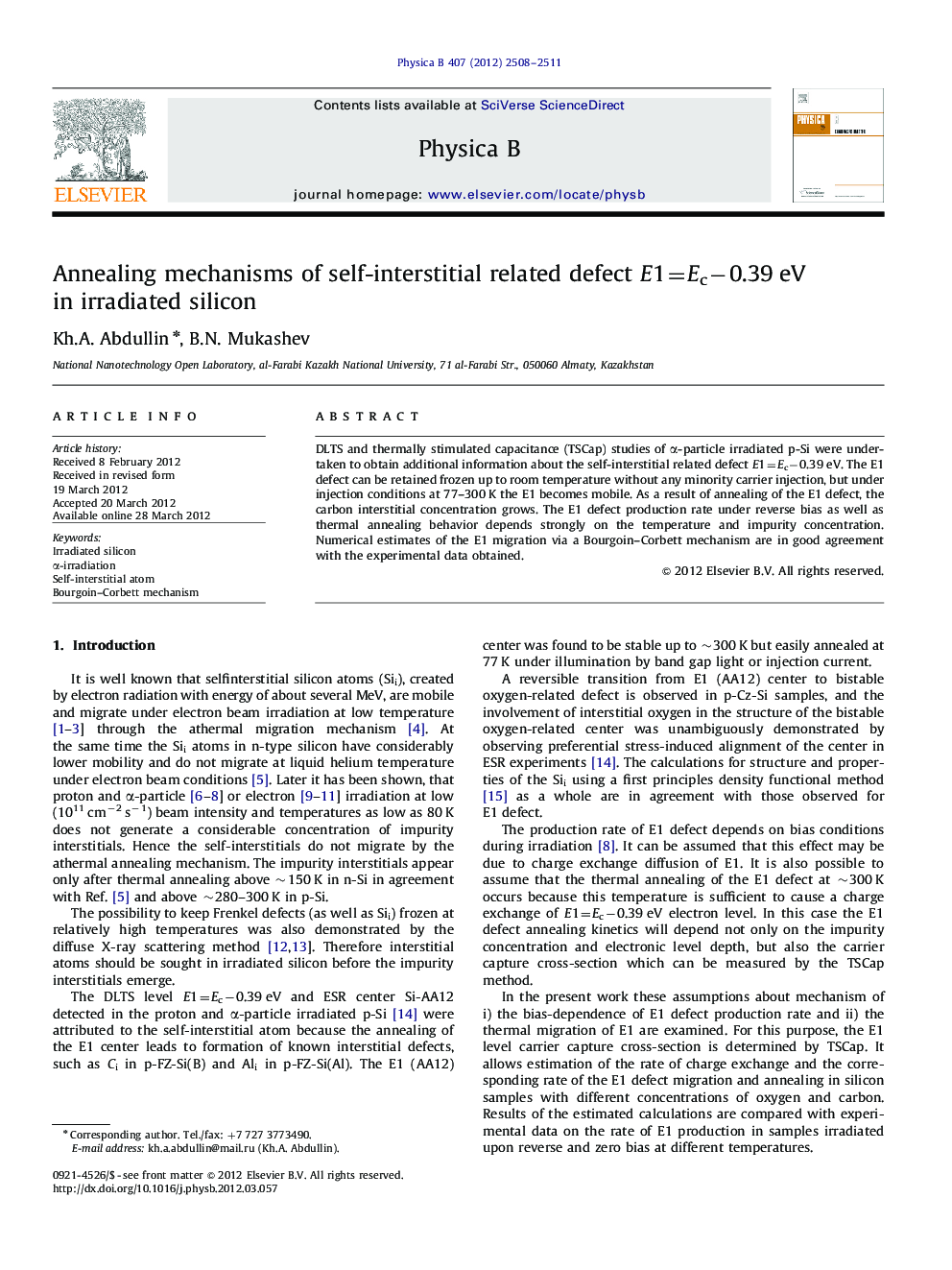| Article ID | Journal | Published Year | Pages | File Type |
|---|---|---|---|---|
| 1810605 | Physica B: Condensed Matter | 2012 | 4 Pages |
Abstract
DLTS and thermally stimulated capacitance (TSCap) studies of α-particle irradiated p-Si were undertaken to obtain additional information about the self-interstitial related defect E1=Ecâ0.39 eV. The E1 defect can be retained frozen up to room temperature without any minority carrier injection, but under injection conditions at 77-300 K the E1 becomes mobile. As a result of annealing of the E1 defect, the carbon interstitial concentration grows. The E1 defect production rate under reverse bias as well as thermal annealing behavior depends strongly on the temperature and impurity concentration. Numerical estimates of the E1 migration via a Bourgoin-Corbett mechanism are in good agreement with the experimental data obtained.
Keywords
Related Topics
Physical Sciences and Engineering
Physics and Astronomy
Condensed Matter Physics
Authors
Kh.A. Abdullin, B.N. Mukashev,
